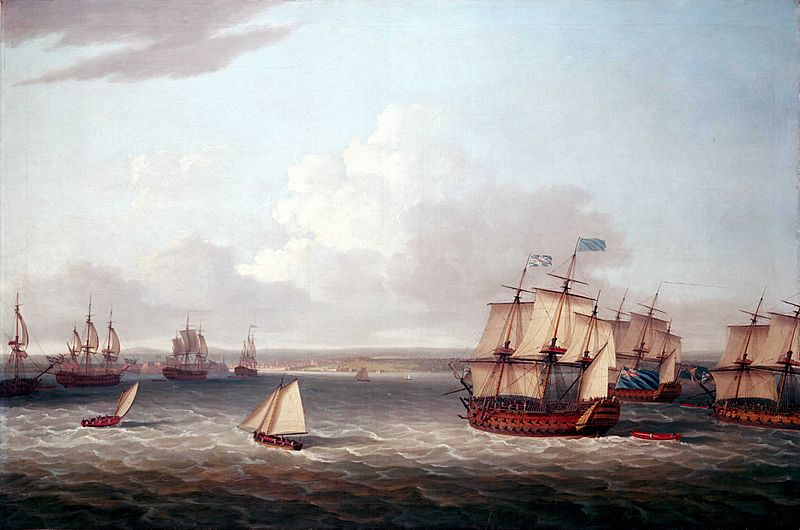Archivo: British fleet entering Havana

Descripción: A depiction of an episode from the last major operation of the Seven Years War, 1756-63. It was part of England's offensive against Spain when she entered the war in support of France late in 1761. The British Government's response was immediately to plan large offensive amphibious operations against Spanish overseas possessions, particularly Havana, the capital of the western dominions and Manila, the capital of the eastern. Havana needed large forces for its capture and early in 1762 ships and troops were dispatched under Admiral Sir George Pocock and General the Earl of Albemarle. The force which descended on Cuba consisted of 22 ships of the line, four 50-gun ships, three 40s, a dozen frigates and a dozen sloops and bomb vessels. In addition there were troopships, storeships, and hospital ships. Pocock took this great fleet of about 180 sail through the dangerous Old Bahama Strait, from Jamaica, to take Havana by surprise. Havana, on Cuba's north coast, was guarded by the elevated Morro Castle which commanded both the entrance to its fine harbour, immediately to the west, and the town on the west side of the bay. The English fleet moved into Havana harbour once the obstructions had been cleared on 21 August. On the left of the picture, Commodore Augustus Keppel in the 'Valiant', is leading in his squadron first, an honour accorded him by Admiral Sir George Pocock. On the right Pocock's 'Namur', flying his flag as Admiral of the Blue, together with the Union flag and blue ensign, is shown following with the bulk of the fleet.
Título: The British Fleet Entering Havana, 21 August 1762
Créditos: National Maritime Museum BHC0415
Autor(a): Dominic Serres
Términos del Uso: Public domain
Licencia: Public domain
¿Se exige la atribución?: No
Usos del archivo
Las siguientes páginas enlazan a este archivo:

